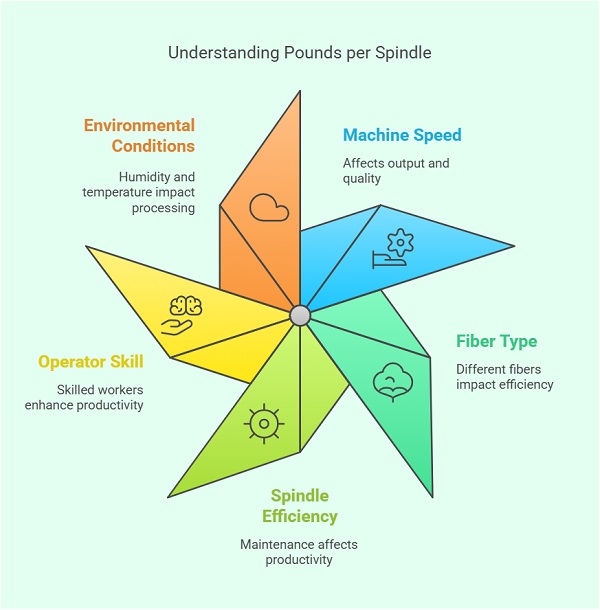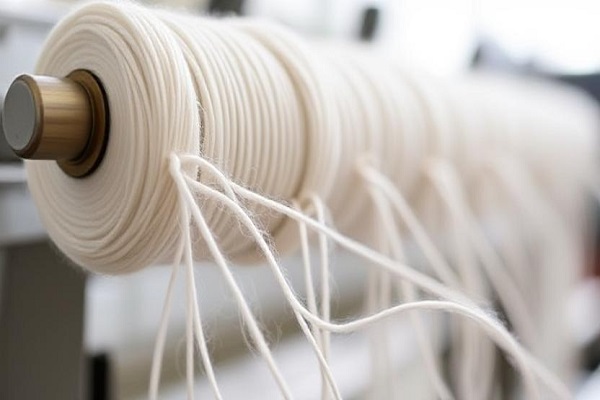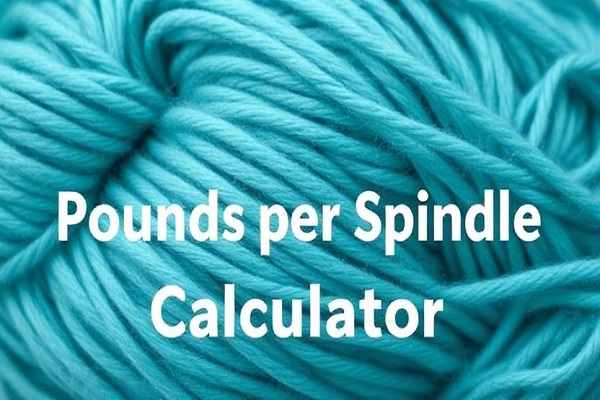Pounds per Spindle Calculator
© Yarn Count Ltd. All rights reserved.
Disclaimer: All tools in the Yarn Count have been reviewed by the relevant spinning industry experts.
The formula for Pounds per Spindle
Pounds per Spindle =Total Pounds ÷ Total Spindles
Where:
- Total Pounds = The total weight of the yarn in pounds.
- Total Spindles = The total number of spindles used in the process.
Table of Contents
What Is Pounds per Spindle?
Pounds per spindle is a key metric in textile manufacturing. It represents the weight of yarn produced per spindle in a given time frame. This measurement helps assess production efficiency, machine performance, and overall mill output.
Importance of Pounds per Spindle
- Evaluates machine productivity
- Helps in process optimization
- Assists in cost calculation
- Identifies production inefficiencies
Formula for Pounds per Spindle
To calculate pounds per spindle:
Pounds per Spindle = Total Yarn Production (lbs) ÷ Number of Spindles
Example Calculation
If a mill produces 10,000 lbs of yarn with 5,000 spindles:
10,000 ÷ 5,000=2 lbs per spindle
This means each spindle contributes 2 lbs of yarn to production.
Factors Affecting Pounds per Spindle

1. Machine Speed
Higher spindle speed can increase yarn output but may affect yarn quality and cause breakages.
2. Fiber Type
Different fibers have varying spinning properties. Cotton, polyester, and wool impact spindle efficiency differently.
3. Spindle Efficiency
Worn-out spindles or improper maintenance reduce efficiency, lowering pounds per spindle.
4. Operator Skill
Trained workers ensure proper machine handling, reducing downtime and increasing productivity.
5. Humidity and Temperature
Environmental conditions impact fiber processing. Maintaining optimal humidity improves fiber cohesion and machine efficiency.
Optimizing Pounds per Spindle
1. Regular Maintenance
Cleaning and lubricating spindles prevent wear and enhance performance.
2. Adjusting Machine Settings
Calibrating spindle speed and twist settings optimizes production without compromising yarn quality.
3. Training Operators
Skilled workers minimize errors, reduce yarn breakage, and ensure smooth production.
4. Monitoring Raw Material Quality
Using consistent fiber quality improves yarn uniformity and production efficiency.
Industry Standards for Pounds per Spindle

Textile mills aim for optimal pounds per spindle depending on fiber type and spinning method:
- Cotton Yarn: 1.5 – 3.0 lbs per spindle
- Polyester Yarn: 2.0 – 4.0 lbs per spindle
- Wool Yarn: 1.2 – 2.5 lbs per spindle
Using the Pounds per Spindle Calculator
Our calculator simplifies the process. Enter total yarn weight and spindle count to get an instant result. This helps in tracking production trends and making data-driven improvements.

Benefits of Using the Calculator
- Saves time on manual calculations
- Reduces errors in measurement
- Provides real-time production insights
- Assists in cost estimation
Conclusion
Pounds per spindle is an essential metric in textile production. Monitoring and optimizing this value enhances efficiency, reduces costs, and improves overall productivity. Use our calculator to streamline calculations and achieve better control over yarn production.